526
Cold Hardy Citrus / Re: F2 citrange winter hardiness trial
« on: November 25, 2019, 12:54:59 PM »
A number of seedlings and grafted specimens as they show leaves preparing to abscise for winter.
A seedling of either Meyer lemon, or Moro blood orange showing good tolerance to this point. No expectations of winter survival.
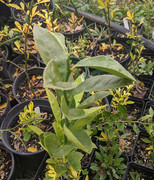
Ichangquat 6-7-2 seedling showing shoot damage - not deciduous (not expected to be).

TaiTri seedling not showing much damage, partially deciduous at this point.
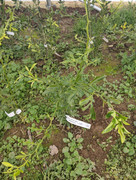
5* Citrumelo showing minor tip damage, not deciduous at this point.
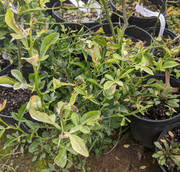
Segentrange # 58 monofoliate, not deciduous, showing a bit of tip damage (off photo). Original plant (in soil).

Segentrange #21 deciduous, showing little damage. On Poncirus rootstock.
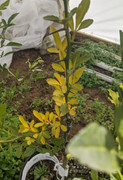
Segentrange #001 deciduous (not last year), no damage. On Poncirus rootstock.

Segentrange # 010 deciduous, no damage. On Poncirus rootstock.

Segentrange # 011 deciduous, no damage, possibly
the hardiest specimen. On Poncirus rootstock.
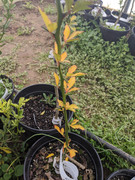
A seedling of either Meyer lemon, or Moro blood orange showing good tolerance to this point. No expectations of winter survival.

Ichangquat 6-7-2 seedling showing shoot damage - not deciduous (not expected to be).

TaiTri seedling not showing much damage, partially deciduous at this point.

5* Citrumelo showing minor tip damage, not deciduous at this point.

Segentrange # 58 monofoliate, not deciduous, showing a bit of tip damage (off photo). Original plant (in soil).

Segentrange #21 deciduous, showing little damage. On Poncirus rootstock.

Segentrange #001 deciduous (not last year), no damage. On Poncirus rootstock.

Segentrange # 010 deciduous, no damage. On Poncirus rootstock.

Segentrange # 011 deciduous, no damage, possibly
the hardiest specimen. On Poncirus rootstock.






